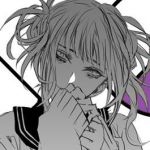Not a member of Pastebin yet?
Sign Up,
it unlocks many cool features!
- --- Week 1/2/whatever/old notes ---
- Children were mostly seen as functional in ancient times and reached adulthood around age 10-12. Boys were taught trades, statesmanship, or combat and girls were taught housework. Around the age of enlightenment, John Locke popularized the view of nurture over nature, which pushed that parents should actively shape their children's lives and development, a view with both positive implications (stronger family bonds) and negative (tough love is beneficial). Jean Jacques Rousseau evolved this with the idea that children were naturally Innocent, and tended towards good when free from corrupting influences, so they also benefitted from being given lots of freedoms and kept away from dreary uniformity (ie, school).
- Nursery rhymes were created in France before moving to England. Traditionally oral. First official collection by Englishwoman Mary Cooper. Mother Goose is spiritually emblematic of the genre. Some are actually offputting -- it's raining it's pouring is about the old man dying, Humpty Dumpty the egg dying. Some were based on real life crimes -- Peter Peter pumpkin eater, Mary mary quite contrary. Lastly there are some, like Dr. Seuss, that don't have historical meaning.
- --- Week 3 ---
- - John Newberry was the father of child's lit around 1740 in England.
- - Did not publish fairy tales.
- - Heavy christianity/morality angle.
- - Enlightenment (reason, liberty, tolerance) was followed by Romanticism (imagination, feeling, nationalism).
- - Era of the Grimms.
- - Grimms were german, ostensibly based stories on national folk tales.
- - But some stories were actually from wider Europe.
- - Took liberties with adaptation.
- - Nazis used Grimm's tales as a basis for their idea of german national propaganda.
- - "Red riding hood = germany, wolf = jews," apparently.
- - Their stories were meant for both adults and children.
- - They toned down sexual content in their adaptations but enhanced violence and christian themes.
- - Enhanced violence in children's tales was not so bad, if it teaches children fear of hell, or so the church believed.
- - However later Grimm stories became more sanitized.
- - Juniper Tree Tale:
- - Woman eats apple in garden, dies in childbirth. Pregnancy = life and death. Juniper tree grows in grave.
- - The devil convinces the stepmother of the woman's son to hate him.
- - "The devil made her do it" is pretty common in Grimms, in fact.
- - Son is a christ figure? Blessed innocence?
- - Anyways the stepmother decapitates him, and her daughter cooks his blood into a soup. Fun and normal stuff.
- - The boy's bones are buried under the Juniper tree and a bird (phoenix?) flies out, singing about revenge and killing the stepmother.
- - Brave Little Tailor
- - Much more wholesome.
- - Character is bright, joyous, bold, quick.
- - Wish fulfillment of a common person becoming a prince.
- --- Week 3.2 ---
- - Hans Christian Anderson
- - Victorian fairy tale author
- - 1800s
- - Satirical humour
- - Heavy use of Pathos (emotion)
- - Wrote little match girl (sobbing)
- - Some of his stories are semi-autobio.
- - Maybe had Aspergers?
- - Lots of women suffering in stories, probably sexist because that really seemed to be his thing.
- - The little mermaid is not very feminist.
- - Women sacrifices magic for a guy, sigh.
- - Can *maybe* be seen as a parable for growing up.
- - But that's probably a stretch.
- --- Week 4 ---
- - A quick timeline of children's lit (not just fairy tales):
- - Renaissance Italy, Straparola 1500s and Basile 1600s.
- - Innuendos, grotesque humour.
- - Enlightenment France, Perrault, de Beaumont, late 1600s.
- - Englightenment England, John Newbery, 1700s.
- - Children's lit but not fairy tales.
- - Lesson books meant to be fun to read.
- - Romantic Germany, Grimms, 1800s.
- - Romantic Denmark, Hans Christian Anderson, ~1850s.
- - Victorian England, Joseph Jacobs, 1900s.
- - First novel for children: History of Little Goody Two Shoes, John Newbery, 1765.
- - Taught morals and values.
- - Based on real life situations, no princesses/magic.
- - Golden Age of Child Lit: ~1850 to WW1.
- - Inspired by Newbery style.
- - Lots of traditional nuclear family characters.
- - Picture books.
- - Coincided with the rise of children's education/literacy.
- --- Week 4.2 ---
- - Bits of the psyche:
- - Superego: conscience. Rule-follower. Rider on a horse.
- - Ego: mediator between id and superego. Sides with id.
- - Id: repressed desires, sex drive, suicide drive. Horse with a rider.
- - Easy to represent these in visual language, with the evil id being the monster locked in the basement or some such.
- - But also id might be represented by nature, in which case it's good.
- - Or neutral/chaotic elements, like Wonderland as the id.
- - Show how an external object is a symbol for an inner aspect.
Advertisement
Add Comment
Please, Sign In to add comment

